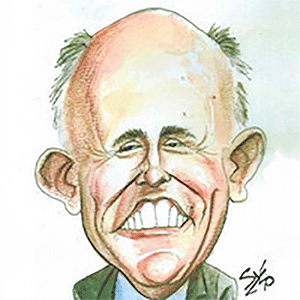Internet calling: US government approves funding for smartphone broadband
Published in Science & Technology News
Look up: Can you see the sky?
If so, chances are good you can connect to the internet with your smartphone without the worry of dead spots.
What’s new about that is that the federal government is now funding smartphone broadband access in remote areas as part of a $42.35 billion program to connect every American home and business with reliable, affordable and high-speed internet service.
In Pennsylvania alone, there are more than 15,000 remote sites where burying fiber is just not practicable and the state may have to turn to technologies other than the gold-standard fiber optic cable, according to the Pennsylvania Broadband Development Authority.
Smartphone links to satellites can guarantee dead-zone free calling and texting and 15% of U.S. consumers only use the phones to connect to the internet, according to the Pew Research Center, a Washington, D.C. think tank.
But using smartphones to surf the web by way of satellites can mean choppy service at a higher upfront cost to consumers when compared to fiber connections, according to Sascha Meinrath, the Palmer Chair in Telecommunications at Penn State University.
Fiber optic cable and satellite technologies are “not functionally equivalent,” he said.
“If you have nothing and this is your only option, it fills a niche,” he said about satellite broadband. “The problem is that it’s an easy solution for second-class service at a much higher price to the underserved.”
The hitch: Satellite phone and internet access suffers from latency or choppy connections resulting from transmitting radio signals back and forth to satellites that are more than 200 miles away and orbiting Earth at 17,500 miles an hour.
Pennsylvania has been allocated $1.16 billion to connect every home and business in the state to the internet, with dramatic differences in installation cost between cities and rural or mountainous areas. Applications for infrastructure funding through the federal Broadband Equity Access and Deployment Program are due to the state Jan. 21, with award announcements anticipated in the third quarter.
The average U.S. cost of a fiber connection is $16,100, but for “extremely high cost connections,” the National Telecommunication and Information Administration announced Jan. 2 that states can use alternate technologies, such as satellite phones and fixed wireless signals, to achieve universal broadband access.
The new policy allows states to reimburse satellite providers based on subscriber milestones or number of locations in a particular service area.
Hughes Network Systems LLC of Germantown, Md., and Viasat Inc., of Carlsbad, Calif., are among the companies offering satellite internet through low orbiting satellites.
In addition, Bellevue, Wash.-based T-Mobile opened registration this year for “satellite technology trailblazer” Starlink satellite services for telephone calls that will “help eliminate dead zones by providing coverage for the 500,000 square miles of land in the U.S. not covered by Earth-bound cell towers,” according to a news release.
Internet connections aren’t part of the plan, but both companies already offer broadband services.
Redmond, Wash.-based Starlink, which is owned by entrepreneur Elon Musk, began commercial operations in 2021.
Washington County has installed 187 miles of fiber optic cable for broadband connections, according to Washington County Authority Executive Director John Timney, but satellite phones have not been part of the county’s broadband contracting grants so far.
That could change. An isolated campground in the county may have to get satellite internet access because fiber optic cable is not feasible, he said.
“We’ve been agnostic on the solution,” he said. “Any option that is available, we use.”
Still, early in the rollout of internet access for every resident, Westmoreland County officials are sticking with fiber — for now, planning executive director Jason Rigone said.
“We considered fixed wireless and low-Earth orbiting satellites,” he said. “Right now, we prefer the traditional wired fiber. However, there are areas that are truly hard to get to because they are cost prohibitive.”
Starting in August, dozens of comments were submitted in response to the federal government’s solicitation on the new policy, including one from a man who identified himself as Dave Tyler. Sending a note from an iPhone, Tyler said he had “some ideas on how the government can save a lot of money.”
He strongly supported using Starlink for internet access.
“You will save us a ton of money if you just stop asking stupid questions,” he wrote. “Just use them, you ignoramuses.”
_____
©2025 PG Publishing Co. Visit at post-gazette.com. Distributed by Tribune Content Agency, LLC.






Comments